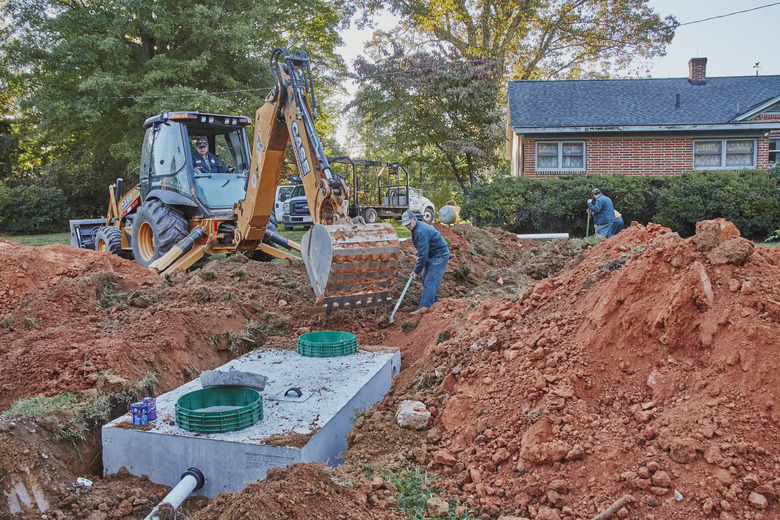What Size Septic Tank Do I Need?
Septic systems handle on-site wastewater management just outside your home. Maybe your construction project is away from a municipal area, or you just like the idea of handling wastewater treatment privately. Whatever the reason for using a septic system, sizing the septic tank correctly is crucial to the system running well. The location and number of field lines will be determined by the percolation test, sometimes called a perc or perk test, and local codes. The size of the septic tank you'll need is based on water usage or home size.
Why Septic Tank Size Matters
Why Septic Tank Size Matters
The septic tank is the first stop for all the water that leaves your home from your toilets, showers, laundry, and kitchen. The water stays there for as long as 24 hours with the tank serving as the area where solids get separated from the liquids. That retention period is crucial in separating solids from liquids. Bacteria in the tank helps to break down the solids.
The size of the tank affects how well the system can separate and break down the waste. If the tank is too small for your water usage, the wastewater gets forced out prematurely before everything settles because more water is coming. It would make sense to assume bigger is better, but a tank that's too big for your water consumption can mess with the bacteria forming. That can affect the tank's efficiency.
Calculating Septic Tank Size by Water Usage
Calculating Septic Tank Size by Water Usage
There are a number of methods of calculation to determine the septic tank size that's needed for your home. The most accurate and reliable way is with water usage. The size of the septic tank required is based on the amount of water it will handle and in turn will be dispersed into the field lines. It should be noted that in many parts of the country, the minimum size tank allowed is 1,000 gallons.
Based on the total water usage of your home, you'll need the following recommended septic tank size:
|
Up to 500 gallons per day |
900 gallon tank |
|
Up to 700 gallons per day |
1,200 gallon tank |
|
Up to 900 gallons per day |
1,500 gallon tank |
|
Up to 1,240 gallons per day |
1,900 gallon tank |
Calculating Septic Tank Size By Square Footage
Calculating Septic Tank Size By Square Footage
A less accurate guide to calculating your tank size is the number of bedrooms in your home or the square footage of the home. For a 1,000-gallon septic tank, how many bedrooms can you have? It's tough to say because of varying water usage based on your situation. These calculations assume all bedrooms will be occupied and base the estimated water usage on this data. If you live alone in a three-bedroom house, these calculations will be off. The reasoning for using these calculations is that a new owner may occupy all the bedrooms and the tank must be of an adequate size to handle the load.
Here are the recommended septic tank sizes based on number of bedrooms:
|
1 – 2 bedrooms > 1,500 square feet |
750 gallon tank |
|
3 bedrooms > 2,500 square feet |
1,000 gallon tank |
|
4 bedrooms > 3,500 square feet |
1,200 gallon tank |
|
5 – 6 bedrooms > 5,500 square feet |
1,500 gallon tank |
Estimated Cost of a Septic Tank
Estimated Cost of a Septic Tank
As with any materials or services, the cost can vary widely depending on where you live and the market conditions. For planning purposes, let's assume you are planning to use a concrete septic tank. These are by far the most common and have a long life expectancy. The average 1,000-gallon septic tank will cost you between $500 and $700. If you want to move up to a 1,250-gallon tank, you should expect to pay at least an additional $100. If the tank is properly sized you can expect to need to clean it out every three to five years. On average, it will cost you between $75 and $150 to have your tank emptied. Knowing your budget can help you make your final decision if you're decided between two different tank sizes.
Septic tank size affects how well your overall system works. Your contractor should be able to help you size your tank, but knowing how to roughly calculate your size needs can help you estimate what you need and how much you'll spend.
